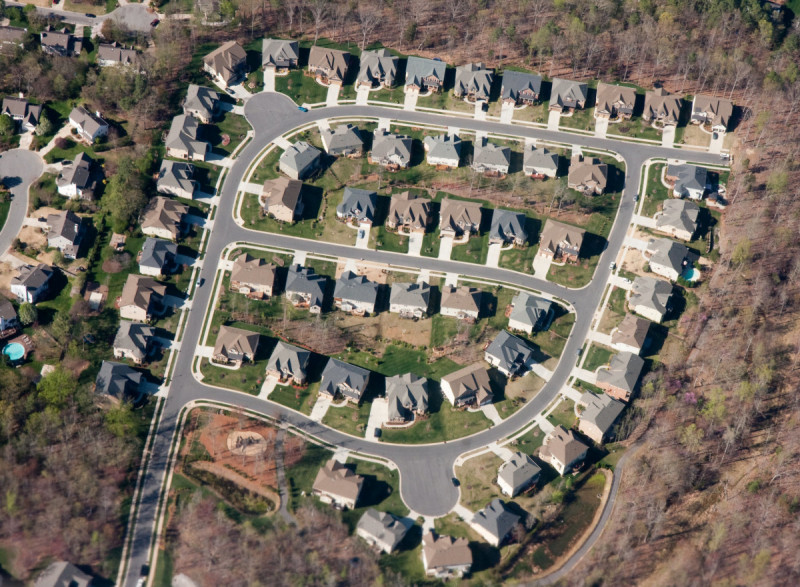National links: The suburbs aren’t built for how we live now

Image by Nathan Rupert licensed under Creative Commons.
Sprawling single-family homes in cul-de-sacs simply don’t serve the needs of most suburban residents anymore, but suburbs can be “retrofit” for the people who live in them. The office is going to look different at the end of all of this. Charlotte could be a model for preserving affordable housing.
The suburbs need a retrofit: Low-density suburban areas are no longer inhabited by the people they were designed for. By redesigning and rezoning for higher density and lower income households, suburbs can become much more livable for one to two person households. Jane Williamson and Ellen Dunham-Jones Discuss their book on urban design strategies for creating more socially, ecologically, and economically healthy suburban communities. (Shayla Love | Motherboard)
The office is not coming back: The future of the physical office space is in question as remote work becomes dominant and many don’t want to go back. Design firms like Gensler and Studio O+A have created office spaces that are more communal as people predict a post pandemic office that is only for gathering, with individual work staying at home. (John Seabrook | The New Yorker)
Charlotte finds a new way to boost affordable housing: In Charlotte, N.C. a local journalist watched the housing market and “naturally occuring” affordable housing and found that there are still ways to provide affordable housing through real estate changeover and longer-term investments. It’s a model that is possible to replicate and could win over social impact investors and staunch capitalists alike. (Nate Berg | Fast Company)
Travel demand models assume growth, not values: Texas has modeled transportation infrastructure on assumptions about increased congestion, but building more roads only increases car travel. There are opportunities and examples of successful promotion of active transportation, with bikeways in Houston and talks of high speed rail. Ultimately, Texas must build for an end goal matching people actually value, not for current habits. (Christof Spieler | Texas Architect)
Amsterdam tries a new economic model: Doughnut economics, a system in which governments reach social goals set within ecological limits, is slowly being adopted in Amsterdam. The model requires economic actions that put environmental limitations and social needs first. In practice, this means collecting old denim, social and environmental taxes on zucchini, and “materials passports” for developers so that building materials are not wasted. (Ciara Nugent | Time Magazine)
Alissa Guther contributed to these summaries.
Quote of the Week
“Public officials, economic developers, urbanists and others should take particular note of how mesofacts contribute to the perception of place. Places are shaped by forces that are always changing, but our perceptions don’t always keep up with the pace of change. Some cities ride the wave of a positive mesofact long after it can still be delivered, while others are stuck with negative, outdated mesofacts that act against revitalization.”
Pete Saunders in Governing Magazine discussing how “mesofacts” can make or break a city moving forward.
This week on the podcast, we’re joined by Professor Sean Benesh to talk about his new book Intro to the City.
